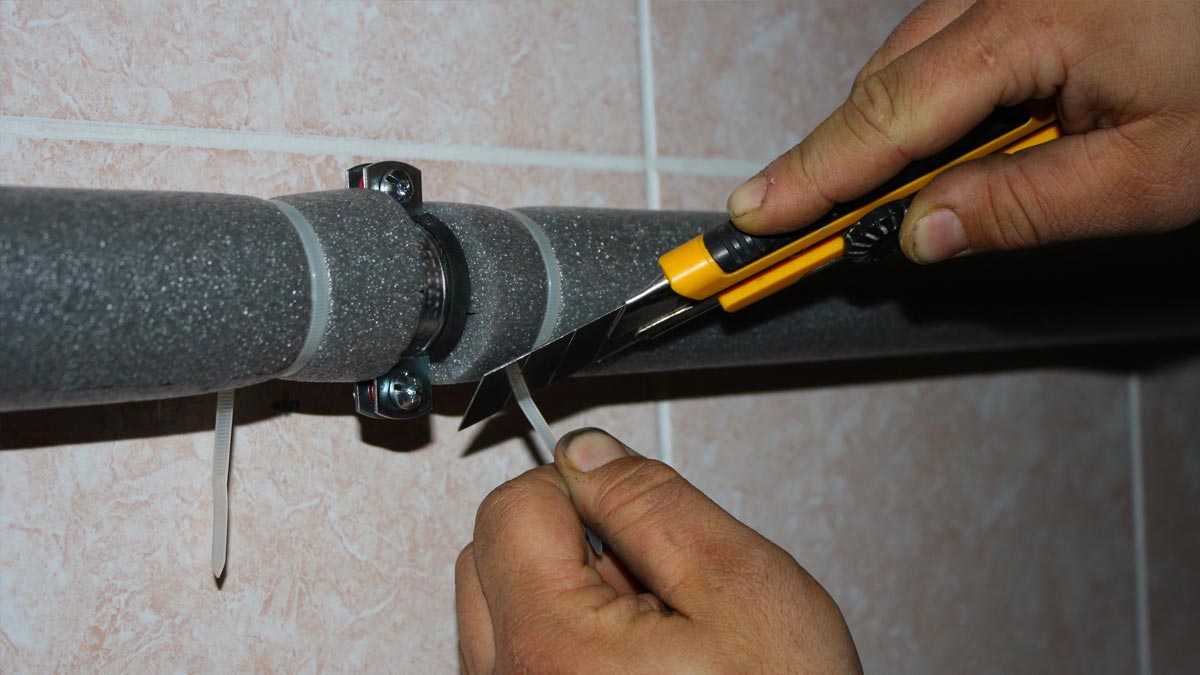Everything in this world should be as reliable as a toilet. It’s not uncommon for one to last more than 40 years with only minimal care. But, sometimes, the toilet leaking at the base leads to severe water damage. But this type of leak is easy to diagnose and fix, even if you’ve never tried a plumbing repair.
About 27% of your water usage comes from toilet flushing. A leaky toilet can have a practical effect on your bill. The toilet is one of the standard water wasters, but its leaks are less apparent than leaky taps.
Here are some noticeable signs of a leaking toilet:
- Jiggling the handle to force a toilet to stop running.
- Sounds are coming from a toilet that is not being used.
- Noticing water trickling down the sides of the toilet bowl after it has been flushed.
- Toilets flush on their own without touching the handle – phantom flushing.

How to Fix a Leaking Toilet?
Have you ever experienced a toilet leaking from base? It is annoying. Everything is supposed to be as reliable as a toilet. It’s not unusual for one to survive more than 40 years with only minimal care. But, sometimes, water leaks from under the toilet and spills onto the floor, leading to extreme water damage. But this boiler leaking at the base is straightforward to diagnose and fix, even if you’ve never endeavored a plumbing repair.
But don’t worry. We are here to help you out. In this article, you will find out why your toilet may leak at the base and how to fix it to stop expensive damage.
Why Is the Toilet Leaking at the Base?
The leak is commonly caused when the seal under which is under the toilet fails. Here you’ll learn how to install a new wax gasket to make a watertight seal between the bathroom and the closet flange and a new flexible water-supply tube.
Water pooling around the toilet’s base means the wax seal has failed. But in some cases, the problem is elsewhere. You can soak up the water from the floor with a sponge and dry the toilet with a towel. You can wait until a new puddle appears on the floor, then check to ensure the water is leaking out from under the toilet.
Condensation on Toilet Collects on Floor
Since the toilet holds water, it’s realistic to suppose that the toilet is leaking at the base. Moisture-laden air may condense on the toilet bowl or tank’s outer surface. Moisture forms drop that run down the bowl or tank and collect on the floor. This can be because of a continuously running toilet or a temperature difference between the room and the water in the tank.

1. Toilet Is Loosely Attached
Toilets are connected to the floor with bolts. These bolts connect to the metal or plastic closet flange, and the flange attaches to the base around the top of the sewer pipe.
Over time, toilet bolts can loosen. Tightening these bolts can sometimes prevent water from leaking around the base. The toilet may also be loose since the seal is loose or leaking, so you’ll desire to replace the seal.
2. Faulty Toilet Seal Leaks Water
Hidden under the toilet is a wax ring that seals the toilet’s base against the top of the pipe and closet flange.
Wax toilet seals can solidify or loosen over time, allowing water to leak from the toilet’s base. Or the original wax seal might have been ineffective in the first place.
The resolution is to remove the toilet, clean the flange, and replace the wax seal with an enhanced seal or a silicone ring.
3. Toilet Tank and Bowl Are Loose
Most toilets contain two major parts: the lower bowl and the upper tank, with the tank attached to the bowl with brass or plastic bolts and a mack washer connector.
These bolts might become loose, or the O-ring gasket between the tank and the bowl may be cracked or loose. Tightening the bolts can sometimes boost the attachment between the two pieces. If the gasket is wrong, it can be substituted with a new gasket.
If the bolts have deteriorated, they may not pull quickly and require to be replaced. If so, consider employing a proficient, as the bolts must be cut by hand, a job requiring a certain level of expertise.
4. Safety Considerations
Be careful of water seeping from the toilet’s base, as it will be impure. Utilize latex gloves when working with toilets. When completed, thoroughly clean up the work area with a disinfecting answer.
Tips for Preventing Toilet Troubles
Clean your toilet with a mild cleaner.
Vinegar, baking soda, or mild soap are excellent choices for standard porcelain cleaning. Cleaning your toilet aid you keep a more hygienic, better-smelling bathroom, but it also lets you spot a leak or a problem with the bathroom’s plumbing fast. If you never clean up around the toilet, how will you know if the water on the floor is from your toilet or not?
Inspect your toilet's inner workings every six months to ensure the components are still in good shape and functioning correctly.
Take the lid off and then flush the toilet. Watch the features work, ensure the flapper is sealing well, and the fill valve stops running at an appropriate water level.
Fix a running or leaking toilet base right away.
Toilet leaks are commonly “silent” because you won’t necessarily find a puddle of water on the floor since the water usually leaks out from the tank into the bowl (and down the drain). This makes it relatively simple to manage the leak or to keep putting off fixing it. Toilet leaks are generally slow leaks, too, so you may not even understand a slight growth in your bills every month until you discover you pay $100 more for water this month than you used to pay at the same time last year.
Don't get help from brick to save water in your tank.
Unless your toilet is older than the mid-90s, you’re using 1.6 gallons per flush (or less), and most sewage systems need that much water to move the waste effectively. If your toilet is older and you desire to save water, we suggest filling a water bottle with sand or small rocks and employing that to displace some of the water. Bricks can break down and block your pipes.
Teach children the correct way to care for a toilet.
While this is simplest during potty training, you can still teach older children what can and cannot be flushed, how to manage their toilet paper usage to aid prevent clogs, and the proper way to clean a toilet. These life skills will be handy when they move into their apartments or houses one day.
Don't flush anything-literally anything- other than human waste and toilet paper down the toilet.
While this is simplest during potty training, you can still teach older children what can and cannot be flushed, how to manage their toilet paper usage to aid prevent clogs, and the proper way to clean a toilet. These life skills will be handy when they move into their apartments or houses one day.

Consider what kind of toilet paper you're utilizing.
Not all toilet paper is created equal. Although you might love the super soft ultra-deluxe cushy toilet paper you’re using; chances are your sewage or septic system doesn’t. While this isn’t a problem for those on a municipal sewage line, using too much toilet paper that doesn’t break down efficiently can clog the sewage pipes inside your home and force backups in the lateral joining your home to the municipal line.
Buy a flange plunger and learn how to use it properly.
Many toilet clogs are easy to remove with a bucket of hot water and a good plunger. If still, you aren’t able to remove the clog with a plunger, an auger or snake is a good backup.
Don't be afraid to employ a plumber when necessary.
Some jobs are too big or complex for even experienced DIY’ers to handle alone. If your toilet is constantly clogged or you get brown water backing up into your shower or sink when you flush, those are signs of a more severe problem that you’ll require professional help with.
Utilizing the above-mentioned factors, you don’t need to worry about the leaking toilet at base. Employing the instructions, you can prevent a leaking toilet from base and diagnose and fix it in case this annoying situation happened.
How useful was this post?
Click on a star to rate it!
Average rating / 5. Vote count:
No votes so far! Be the first to rate this post.











